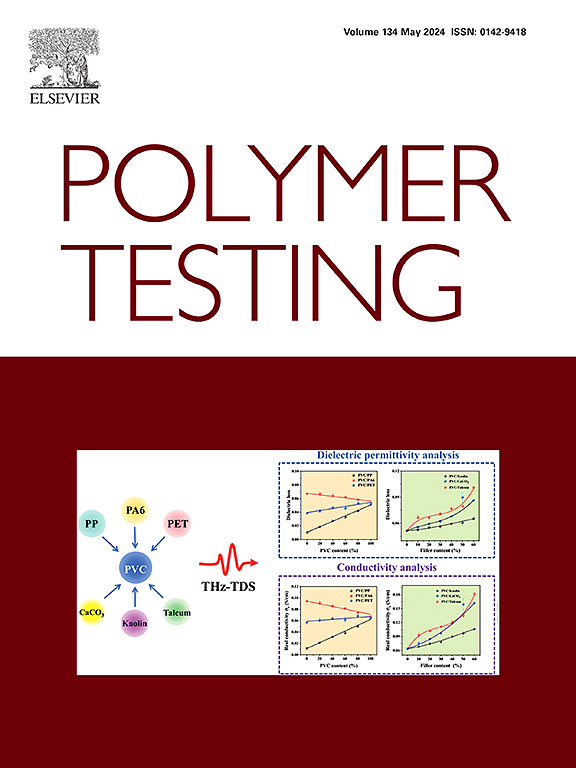Mechanically reinforced and flame-retardant epoxy resin nanocomposite based on molecular engineering of POSS
IF 5
2区 材料科学
Q1 MATERIALS SCIENCE, CHARACTERIZATION & TESTING
引用次数: 0
Abstract
The existing flame retardants are extensively utilized for epoxy resin (EP) in the field of engineering materials with good flame retardancy. Nevertheless, their introduction often brings a substantial decrease in mechanical properties of EP. To tackle this challenge, a multifunctional nano flame-retardant (PoDOH) that is designed to enhance both the flame-retardant and mechanical properties for EP simultaneously was synthesized in this study. The results demonstrate that for EP-10 %, its hardness increased by 34.8 %, and Young's modulus increased by 25.4 %, respectively, owing to the strong interfacial interaction among EP and PoDOH derived from the ring-opening reaction. Moreover, the synergistic action of the various flame retardant elements present in PoDOH imparts excellent flame retardancy to EP-10 % (V-0 rating, LOI = 32.6 % and PHRR decreased by 48.82 %). These findings indicate that PoDOH holds great potential as a versatile and efficient flame retardant for manufacturing high-performance EP.

求助全文
约1分钟内获得全文
求助全文
来源期刊

Polymer Testing
工程技术-材料科学:表征与测试
CiteScore
10.70
自引率
5.90%
发文量
328
审稿时长
44 days
期刊介绍:
Polymer Testing focuses on the testing, analysis and characterization of polymer materials, including both synthetic and natural or biobased polymers. Novel testing methods and the testing of novel polymeric materials in bulk, solution and dispersion is covered. In addition, we welcome the submission of the testing of polymeric materials for a wide range of applications and industrial products as well as nanoscale characterization.
The scope includes but is not limited to the following main topics:
Novel testing methods and Chemical analysis
• mechanical, thermal, electrical, chemical, imaging, spectroscopy, scattering and rheology
Physical properties and behaviour of novel polymer systems
• nanoscale properties, morphology, transport properties
Degradation and recycling of polymeric materials when combined with novel testing or characterization methods
• degradation, biodegradation, ageing and fire retardancy
Modelling and Simulation work will be only considered when it is linked to new or previously published experimental results.
 求助内容:
求助内容: 应助结果提醒方式:
应助结果提醒方式:


